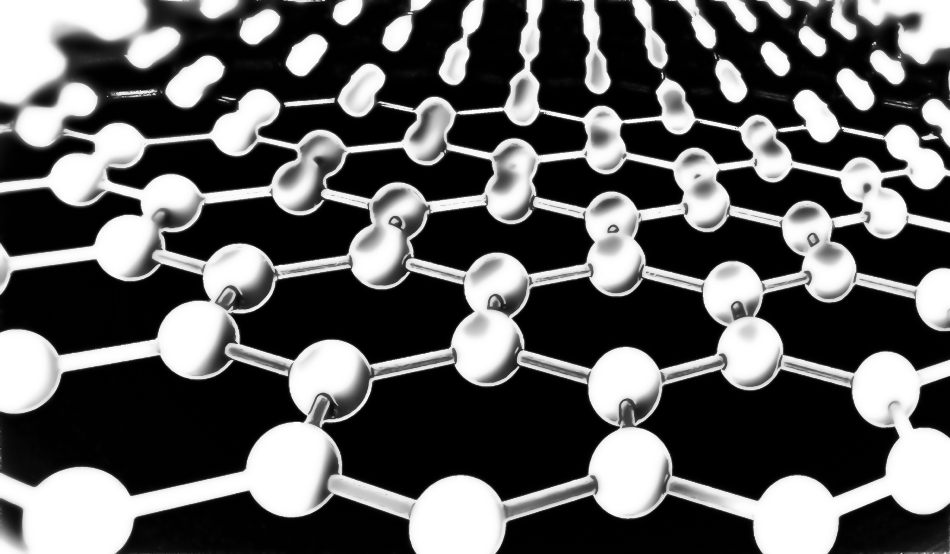Scientists in South Korea have discovered the fundamental principle that gives two-dimensional materials, like graphene, the properties that allow them to work as a next-generation semiconductor, is due to redox reactions. Published this October in the journal Nature Communications, the team from Pohang University of Science and Technology (POSTECH) present their research, outlining their investigations into the oxidation-reduction principle of two-dimensional materials by interfacial diffusion.

Image Credit: Giro Science/Shutterstock.com
The puzzle of how the ambient environment impacts two-dimensional materials
Two-dimensional materials have already proven themselves to be incredibly useful for several applications. Graphene and tungsten disulfide are two examples of two-dimensional materials that have caused a stir in the scientific field due to their uniques properties, making them useful for projects that had since been unachievable. They are thin because they are constructed of just a single or a few layers of atoms. Also, two-dimensional materials are incredibly flexible whilst also being very strong. Due to these impressive properties, materials such as graphene and tungsten disulfide have been successfully used in displays, solar batteries, and semiconductors.
While two-dimensional materials have already gained status as the “dream material”, there has remained a major barrier to them fulfilling their potential. The nature of the material, being two-dimensional, means that all the atoms making up the material, are exposed on the surface. This means that temperature, humidity, and other factors of the ambient environment have a significant impact on the materials, transforming them and changing them so that in some cases they are no longer fit for their intended purpose. However, how these changes happened have remained a mystery, and without understanding the underlying mechanisms, scientists have not been able to solve this issue.
This is what inspired the team at Pohang University of Science and Technology. They aimed to uncover the cause of this phenomenon, by making two-dimensional materials ready for commercialization.
Observing reactions with two-dimensional materials in real-time
The team of three in South Korea included Professor Sunmin Ryu, Kwanghee Park, and Haneul Kang. They used photoluminescence imaging to view reactions of water and oxygen molecules with two-dimensional materials in real-time. They also used and Raman spectroscopy to observe graphene. Using this method, the electrochemical redox reaction between tungsten disulfide and oxygen/water in the air was visible. What they saw led them to conclude that an electrochemical reaction driven by the redox couples of water and oxygen molecules, causing the doping of two-dimensional materials with an influx of charges from the outside air. The researchers determined that the physical properties of two-dimensional materials can be controlled by redox reactions, which they believe will have significant implications for the use of two-dimensional materials in applications such as high-speed transistors, ultralight materials, next-generation batteries, and more.
Finding an answer to the phenomenon
The team uncovered revolutionary findings that solved the problem of how the ambient environment profoundly impacts on two-dimensional materials. They observed molecular diffusion occurring between two-dimensional materials and hydrophilic substrates, through the two-dimensional nanoscopic space. Though by its nature, this is a tiny space for molecules to diffuse, the researchers saw that there was enough water introduced to initiate redox reactions. Also, their results were able to prove that charge doping in the acid is also mediated by dissolved oxygen and hydrogen-ion concentration in the same way.
Influential findings likely to impact the future of nano-science
What the South Korean team achieved in their research will be influential to the field of two-dimensional materials and nano-science, and will have implications for a vast number of current and future applications. They have uncovered the fundamental principle controlling the physical properties of two-dimensional materials. Scientists now understand how the magnetic, electrical, and optical properties of two-dimensional and potentially other low-dimensional materials are governed.
By using real-time photoluminescence, the team was able to visualize the fundamental redox couples of oxygen and water molecules. It is likely that the discovery of how redox reactions impact material properties will be a significant step in the development of more advanced nanotechnologies.
Source:
Park, K., Kang, H., Koo, S., Lee, D. and Ryu, S. (2019). Redox-governed charge doping dictated by interfacial diffusion in two-dimensional materials. Nature Communications, 10(1). https://www.nature.com/articles/s41467-019-12819-w
Disclaimer: The views expressed here are those of the author expressed in their private capacity and do not necessarily represent the views of AZoM.com Limited T/A AZoNetwork the owner and operator of this website. This disclaimer forms part of the Terms and conditions of use of this website.